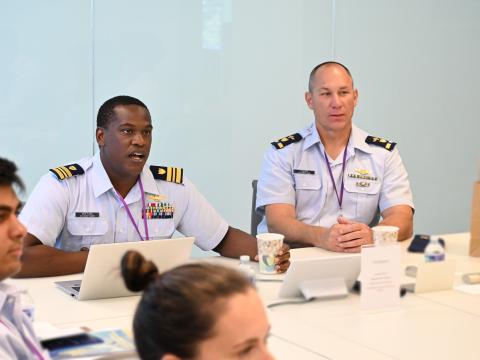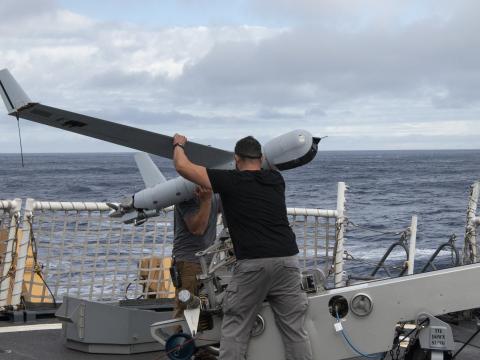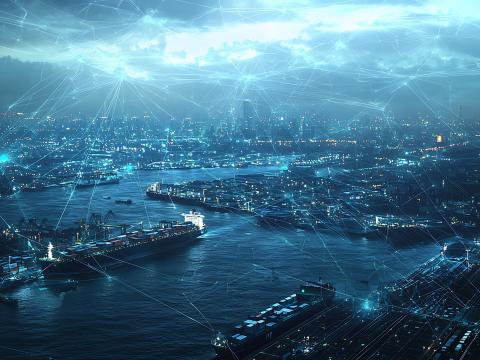On Point: Q&A With Vice Adm. Peter Gautier, USCG
As the U.S. Coast Guard’s deputy commandant for operations, Vice Adm. Peter Gautier develops operational strategy, policy, guidance and resources, and he oversees a broad portfolio, including intelligence; international affairs; cyber; the maritime transportation system; search and rescue; maritime security; and defense operations.
What are your priorities?
The third tenet [of the Coast Guard strategy] is advancing mission execution, which is largely in my portfolio. In advancing mission execution, the first element is to safeguard our maritime transportation system.
Then it’s everything from ensuring our channels are open with our vessel traffic services and our aids to navigation to bolstering the cybersecurity of the largely private sector infrastructure, whether that be shipping or marine terminals and facilities.
In concert with technology integration, we look at using our Coast Guard in new ways. We do more surface action groups, more in terms of getting our cutters out, for example, in the deep Pacific. Our Fast Response Cutters are a surface asset group that can go farther and touch more partner nations.
This is all underpinned by the need to be brilliant at our basics. For example, search and rescue is an enduring mission, a sacred relationship we have with the American people. It’s the fundamentals for our lifesaving groups in the Coast Guard.
Can you elaborate on technology integration?
As things like unmanned systems come online, as cybersecurity evolves, the Coast Guard needs to keep up with that. We also need to integrate technologies for more effective, and quite frankly, efficient and cheaper operations.
We’re forming an Office of Data and Analytics because, like others, we have pools of data that just aren’t available to better inform decisions.
We’re going to use a technology stack—SURVEYOR—to synthesize data so decision-makers have information at the speed of need. We’re small and need to be nimble, so we integrate lessons and capabilities from others in ways most effective for the Coast Guard.
What is your cyber role?
We’ve got three responsibilities in cyberspace.
The first is protecting our own networks that we share with the Defense Department.
The second is to protect the maritime transportation system against cyber intrusions and attacks. We built Cyber Protection Teams that are trained and built in the same way that the Defense Department and U.S. Cyber Command do.
The last one is operating in cyberspace—think cyber offense. The Coast Guard is building capabilities within Cyber Command to develop cyber offensive operations with the Defense Department where we can bring our unique law enforcement capabilities to broaden the mission set.
What trends do you see in maritime operations?
A remarkably intense interest in illegal, unreported and unregulated fishing. The SAFE [Maritime Security and Fisheries Enforcement] Act required senior federal agency representatives to get together, and they published a working group strategy for the next five years that was signed by about 20 different agencies.
I’ll mention the Arctic as a second trend. We’ve been operating in the Arctic since Alaska was acquired in the 1860s. White House strategy lifted the visibility of the region as a strategic frontier and rallied U.S. and international interest throughout the Arctic.
How does partnering with the Coast Guard benefit other countries?
Our strategies—including the strategic outlook for the Arctic, the Western Hemisphere strategy, the cyber strategy—all link to the United States reinforcing international norms—the sorts of norms we have all celebrated and benefited from since the end of World War II that have enabled all nations in their own way to enjoy security and prosperity.
We find ourselves in a moment in history where those very rules and norms are being challenged in a major way by global competitors and other malicious actors in physical space, in cyberspace and in space.





Comments